 Your new post is loading...
 Your new post is loading...

|
Scooped by
Jeff Domansky
December 23, 2013 11:20 PM
|
The famous line from Socrates that the unexamined life is not worth living has taken on a new meaning in the modern era. A wave of companies, many of them start-ups funded through sites such as Kickstarter and Indiegogo, is creating wearable electronic tracking devices for nearly every part of the human body, from brainwave-monitoring headbands to smart socks. And analysts expect the industry to explode over the next five years.
Retail revenue from wearable technology is predicted to jump from about $1.4 billion in 2013 to as much as $19 billion in 2018, according to a new study from Juniper Research. Here’s a quick industry snapshot. If you want in, move fast: There’s hardly any room left on the human body that isn’t about to be covered by a device....

|
Scooped by
Jeff Domansky
December 23, 2013 10:53 PM
|
...Google remains silent on Google Glass’ wide release date, but the company recentlyincreased fourfold the amount of Glass on the street by allowing Explorers to invite friends. As the visibility of Google Glass grows, the backlash has begun. Recently a woman was pulled over for wearing Glass behind the wheel, and several restaurants and bars have banned Glass – especially in the high-tech-heavy cities of San Francisco and Seattle.
Seattle’s Lost Lake Cafe & Lounge became the latest to prohibit Glass in its establishment announced on its Facebook page that Google Glass is not welcome within its doors. It looks like this ban came about after a run-in with an unruly glasshole. It sounds like the intrepid Explorer became irate when asked to remove his (I feel fairly safe assuming this person was male) Glass....

|
Scooped by
Jeff Domansky
December 20, 2013 11:17 PM
|
You knew it was bound to happen, and happen it has. While it apparently still has a ways to go to catch up to Samsung's Galaxy Gear, a Kickstarter-backed company moving some 200,000 or so units in a matter of months is nothing to scoff at. To wit,Pebble‘s seeing a massive spike in developer action now that SDK 2.0 is in the wild and the watch has added full iOS 7 Notification Center support. In a bid to funnel all of that activity into a central location, the outfit on Wednesday announced that the Pebble appstore will launch “in early 2014,” and interested developers can begin submitting their SDK 2.0 Pebble apps immediately.

|
Scooped by
Jeff Domansky
December 20, 2013 11:06 PM
|
Comedian Lewis Black called it out: “This new millennium sucks! It'’s exactly the same as the old millennium. You know why? No flying ...
...This thought occurred to us as more and more full-page ads have recently shown up for the newest early-adopter geek must-have — wearable computing technology (AKA smartwatches), which apparently take all the functions of your smartphone and collection of apps and relocates them to your wrist. The ones, currently with the largest ad budgets have been Samsung’’s Galaxy Gear and Sony’’s SmartWatch2, although rumours abound regarding Apple and Google entries.
Feel free to check out the specs (or rumors) for each, but if your next thought/question was, “”It’’s very techy/nerdy/cool, but why do I need this?”” welcome to the club. Expectations –– even those that seem totally unrealistic and unconstrained by reality, and that are indistinctly described in form and foundation — –always reflect what people really want. And sometimes (–particularly as regards technology) the offerings are everything the sci-fi writers imagined, but nothing that actually meets consumer real expectations....

|
Scooped by
Jeff Domansky
December 20, 2013 10:57 PM
|
In an age where fashion continually romps through society’s wardrobes and technology governs our everyday lives, we’ve finally reached a crossroads where industry boundaries between apparel brands and digital platforms have started to blur. And consumer wearables—the bridge between these two worlds—are the catalyst for that convergence. Known apparel and lifestyle brands like Nike, Adidas, Lululemon and others have made notable advances into the wearable market. On the platform side, Apple has arguably become the ecosystem leader of the wearable explosion, while Google has reached wearable status through Google Glass. More notable, however, is Under Armour’s recent acquisition of MapMyFitness—a game-changing move that has taken the cross-pollination of fashion andtech to the next level. At first glance, the business rationale behind the deal is obvious: Under Armour is now just an app away from digitally engaging and marketing to millions of active athletes—their target consumers. It’s also a meaningful step towards leveling the playing field with the über successful Nike+ digital platform.

|
Scooped by
Jeff Domansky
December 20, 2013 10:45 PM
|
Smarty Ring is a Bluetooth-enabled wearable gadget that allows users to check smartphone alerts, and manage incoming calls right from their finger.

|
Scooped by
Jeff Domansky
December 20, 2013 10:36 PM
|
Time will tell on smartwatches (clever, no?), but I'm betting they'll end up on the gadget scrap heap in a couple of years. To use another pun, time has passed watches by, at least among the younger, technically savvy generation.
Just look around and count how many young people are wearing watches these days. Lots of people no longer wear them, especially in Silicon Valley, because they get the time on their smartphones, as well as email, text messages, voice calls and all other things Internet.

|
Scooped by
Jeff Domansky
December 20, 2013 10:30 PM
|
Wearable technology, wearable devices, tech togs, or fashion electronics are clothing and accessories incorporating computer and advanced electronic technologies. The designs often incorporate practical functions and features, but may also have a purely critical or aesthetic agenda. Wearable technology is related to both the field of ubiquitous computing and the history and development of wearable computers.
|

|
Scooped by
Jeff Domansky
December 23, 2013 11:09 PM
|
Korean electronics manufacturer Samsung powerhouse is expanding research and development into AMOLED technology that can be used in wearable clothing and flexible electronics. The AMOLED industry is going to quickly evolve into a multi-billion-dollar industry by 2020, because of high global demand from numerous computer companies.
Samsung’s focus on wearable technology will involve using the new-generation “stretchable” AMOLED display, as the company realizes the traditional smartphone market is becoming saturated. Samsung and rival LG are the only two companies able to manufacture curved displays on a wide-scale, as other companies trying to catch up. If the smartphone industry is reaching a higher saturation point, being able to implement AMOLED into future products could give Samsung and LG a significant edge.

|
Scooped by
Jeff Domansky
December 23, 2013 10:10 PM
|
Samsung may be following up its Galaxy Gear smartwatch with a new fitness tracker. Tentatively known as the Galaxy Band, it's being touted for launch during Mobile World Congress 2014.
“I flew in from New York and I am about six hours behind and I tossed and turned all night. Now according to Fitbit I am operating at 60% of my optimum speed,” says Natt Garun, Features Editor for The Next Web while interviewing James Park, co-founder and CEO of the company at LeWeb in Paris, France.
This is our reality: devices and apps that gather data on us and tell us how well or poorly we are doing health-wise. This trend is sweeping through the tech space and every new startup wants to play in this field. It’s true of society, we first create things that might kill us then build things that could prevent it.

|
Scooped by
Jeff Domansky
December 20, 2013 11:02 PM
|
Wearable computing, or wearables, has recently moved from the realm of science fiction and military technology to being on the cusp of commonplace consumer technology. ABI Research estimates the global market for wearables in health and fitness could reach 170 million devices by 2017. Adding further momentum to the growth of the market is the entry of most of the major platforms into the space, including Google, Microsoft and Apple.
The first several decades of wearable computing failed to produce any notable success stories on the consumer front, but advances in materials sciences, battery power, augmented reality and chip evolution have made the possibilities for wearables grow rapidly. Google’s recent unveiling of Project Glass has garnered a great deal of attention, but the market is much broader and includes fashion, health and wellness technologies, and technologies for the aging and disabled. As the quantified-self trend gains traction the use of wearables will grow too. This report covers wearables across these verticals as well as provides examples of how applications developed in one area can enable blue-ocean strategies to open up new market opportunities.

|
Scooped by
Jeff Domansky
December 20, 2013 10:49 PM
|
The market for wrist-worn computing devices — including smart watches and fitness bands — will lead the wearable computing space.
Analysts have been too quick to write off the smart watch market after the negative reception for Samsung's Galaxy Gear watch device. We still agree with Apple CEO Tim Cook when he said in May 2013, "I think the wrist is interesting."
The wearable computing market as a whole has so been anchored by smart fitness bracelets and the Kickstarter-funded Pebble smart watch. These two categories are quickly fusing into one larger market: smart wristwear. Smart wristwear will become the wearables category-leader for the ordinary consumer.

|
Scooped by
Jeff Domansky
December 20, 2013 10:39 PM
|
Soon wearable technology will be as common as the iPhone. An expert in ergonomics shows the best way to design for the small screen.
Five years ago, I coined the phrase “Ergonomics of Interaction Design,” to explain how physical ergonomic principles could be applied to the design of user interfaces. At the time, many thought of ergonomics only as it related to 3-dimensional, tangible products where issues of physical fit and comfort were considered critical (think: office chair). But the rapid proliferation of gestural and touch interfaces combined with the widespread use of devices in unconventional contexts--in bed, while driving, while walking--signaled growing design challenges.
Since then, display clarity and touch-screen sensitivity have advanced. Designer awareness and attention to physical interactions have inched upward. But there is still much more to do....

|
Scooped by
Jeff Domansky
December 20, 2013 10:33 PM
|
Let's take a brief look back at the evolution of wearable computing going back a few decades ago. Are we moving toward an age of ubiquitous computing?

|
Scooped by
Jeff Domansky
December 20, 2013 11:09 PM
|
|



 Your new post is loading...
Your new post is loading...

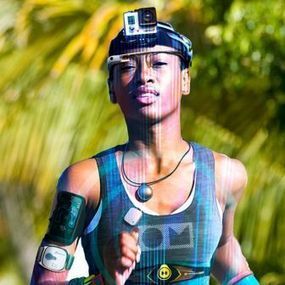

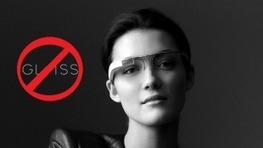
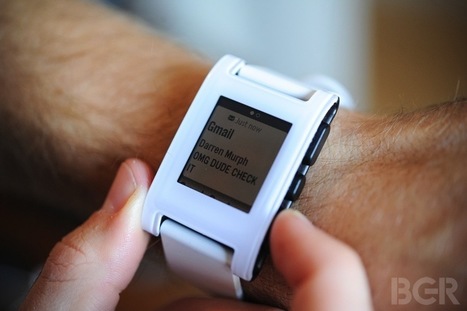

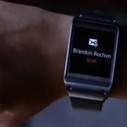

![Smarty Ring Sends Smartphone Updates to Your Finger [VIDEO] | Internet of Things & Wearable Technology Insights | Scoop.it](https://img.scoop.it/HBDHLju1X4XwlMm1F3YS0zl72eJkfbmt4t8yenImKBVvK0kTmF0xjctABnaLJIm9)

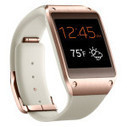


![Wearable tech: the future of the quantified self & smart bras [#LeWeb] | memeburn | Internet of Things & Wearable Technology Insights | Scoop.it](https://img.scoop.it/KN9efXJUbYxRrbMnsWvqQDl72eJkfbmt4t8yenImKBVvK0kTmF0xjctABnaLJIm9)


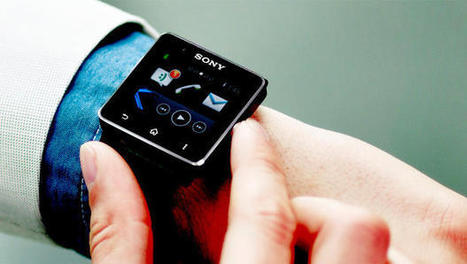






From brainwave readers to exercise trackers, wearable devices are taking off--and creating a big opportunity for start-ups.